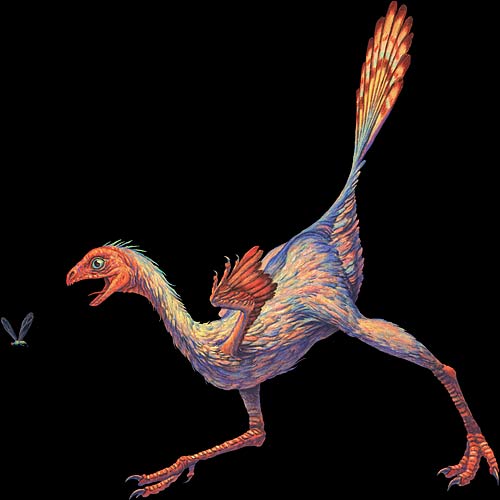Caudipteryx zoui
 |
1998. Acrylic on illustration board. 8"x10".
Publication History |
 |
1998. Acrylic on illustration board. 8"x10".
Publication History |
Named 'Caudipteryx zoui', it lived in what is now China in the Cretaceous period 120 million years ago. This theropod dinosaur was a speedy, two-legged meat-eater that was no larger than a peacock. What makes it so remarkable are the primitive feathers covering its body. Its short forelimbs could be described as either feathered arms or clawed wings. Although unable to fly, Caudipteryx zoui appears to be closely related to modern birds. More research may ultimately prove or disprove this connection, but it seems more likely than ever that one group of dinosaurs survived the mass extinction eons ago and thrives today. Those may be dinosaurs nesting in the trees in your backyard!
Vital Statistics
|
![]()
All images are protected by copyright. Permission to reproduce any image must be obtained by writing to: INTERSTELL@aol.com. Please see our Image Use page for more information.